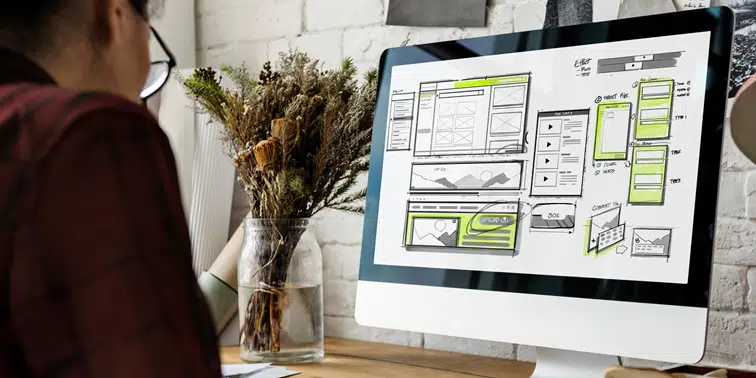Whether you have a website already or are looking for a web developer to create a brand-new website for you, here’s some of the key considerations to think about to ensure that your website is doing what it should – engaging with visitors and being a lead generator.
1. What functionality should your website have?
A website will be developed to your brief. Therefore, think about what you would like first before you speak to a developer. Look at other websites to see what type of functionality you would prefer. Keep a note of these so you can chat with your chosen web developer about your preferences.
Having a Content Managed System (CMS) gives you the ability to update content yourself once the website is created. Therefore you have the choice to maintain the website yourself or work with a digital marketing agency to manage this for you. A CMS website gives you a lot of flexibility for the future for regular blog uploads through to ad hoc landing page creations for new products or services.
You also need to consider the functionality. Do you need an e-commerce website or will a brochure website be suitable for your requirements?
2. Website design
Now you know the purpose of your website and understand your target audience, you need to ensure that your web design will appeal.
Work with your web designer so that they understand your company values, branding and target audience.
A web developer will usually create a mock design for you on a wire frame – check this out when you ask for a website quote.
This mock design will give you an idea of what the homepage will look like providing you the opportunity to feedback on any likes or dislikes. Sometimes it’s easier to do this once the design is in front of you.
If in doubt, keep your website simple.
- Keep colour to a minimum and ensure they are in keeping with your brand. Sometimes the more space on the page the better on the eye.
- Keep font consistent across your website and ensure you can read it – there’s some lovely different styles out there but some offer design over functionality!
- Use images to help break up space.
- Use bold call to actions to encourage website visitors to ‘contact’, ‘get a quote’, ‘download an ebook’.
Above all it’s about ease of navigation, this is where a sitemap comes in.
3. Sitemap
At design stage your web developer can help create the sitemap with you. This will be something you agree at initial stages. The structure of the website hinges on this. Most importantly you need a website that is easy to navigate, easy on the eye – as this helps guide you around the website, and you should always have the purpose at the back of your mind.
4. Search Engine Optimisation (SEO)
Establish up front with your web designer what content you already have, whether you need content edited or written from scratch.
Usually content is transferred from the old website. Or you can provide new content at design stage, indicating where copy needs to be placed.
Check with your developer that the website will be optimised and mobile friendly. SEO includes activity such as completing the meta descriptions. alt tags and H1 headings.
As SEO is a long-term strategy, you will need to keep up with adding fresh content to your website with keywords to help it rise in search engine rankings.
Help potential customers find your website with a digital marketing strategy for lead generation. Link building is a key part of this so activity would include adding links into social posts, completing your Google My Business page, inclusion in email marketing with ‘read more’ call to actions with links to your website.
If your website is new you might want to consider a Pay Per Click (PPC) campaign as this can help give your site a boost in search engine results pages (SERPS).
5. Security
Get security sorted at early stages such as with an SSL certificate as well as an updated privacy policy. Captcha is another security measure to determine whether users are human which you can add to forms or logins. Captcha helps to prevent bots from accessing these areas.
Website design Croydon
Your digital marketing activity should have a consistent look and feel to help brand awareness and encourage loyalty.
We are a web design company in Croydon. Our digital marketing services include creating bespoke websites for accountants, SEO, social media marketing and PPC for accountants in Surrey.
Further resources for web design and development:



